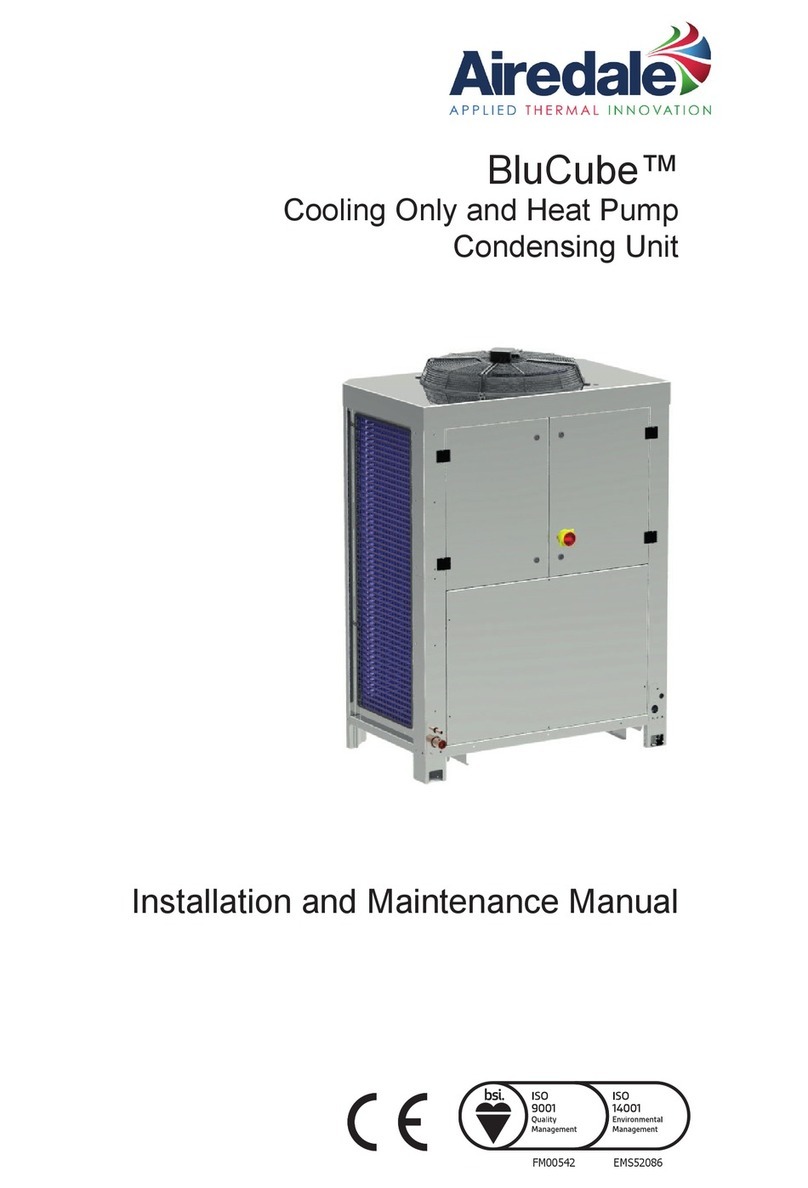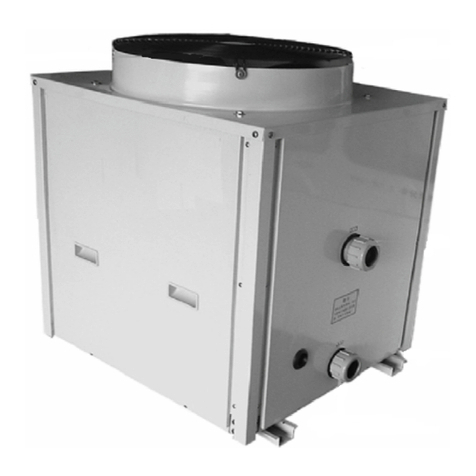
● When the unit needs to be removed or re-installed, please ensure that the work is carried out by
qualified professionals. If the installation is not correct, it may cause unit operation failure, electric
shock, fire, hurt, leaking, etc.
● Please ensure that any repairs carried out by qualified professionals: failure to make proper repairs
could cause unit operation failure, electric shock, fire, hurt, leaking, etc..
● Do no install the unit near flammable sources, as any leakages could cause a fire.
● Make sure the base on which the unit is installed is strong enough to support it.
● Make sure a leakage protection switch is installed to prevent electric shock or fire.
●When cleaning the unit, stop operation, switch off the power and disconnect the power..
3.1 Heat pump operation
Heat pumps use heat from the sun by collecting and absorbing energy from the outside air.
This energy is then compressed and transferred to the pool water. Your existing water pump
circulates the water through the heat pump, which is normally installed next to the pool
filtration system, and the water warms up. The heat pump timer can be set so that the pump
operates at the times you want: for example, during daylight hours from 9am to 5pm.
ØThe unit contains a fan that draws in outside air and directs it over the surface of the
EVAPORATOR (energy collector). The liquid refrigerant inside the EVAPORATOR coil
absorbs the heat from the outside air and becomes a gas.
ØThe warm gas inside the coil passes through the COMPRESSOR, which concentrates
and increases the heat to form a very hot gas, which then passes through the
CONDENSER (water heat exchanger). It is here that the heat exchange occurs as the
heat from the hot gas is transferred to the cool swimming pool water circulating through
the heat exchanger.
ØThe pool water becomes warmer and the hot gas returns to its liquid form as it flows
through the CONDENSER coil. The gas then passes through the Electronic Expansion Valve
and the whole process begins again.
ØDevelopments in heat pump technology mean that today heat pumps can efficiently
collect heat from the outside air even when the temperature is as low as 7-10°C. This
means that for tropical and subtropical climates the pool can be maintained between 26°C and 32°C.
3. Heat pump unit working principle



























